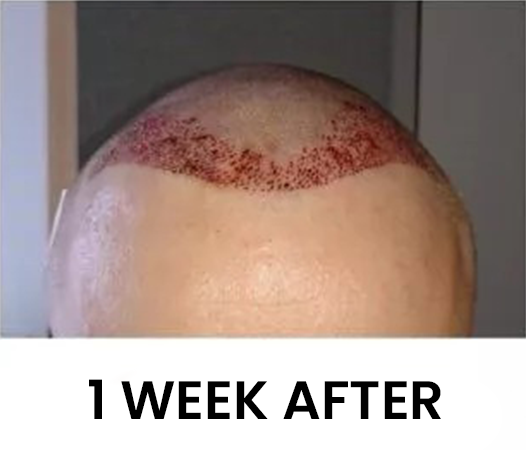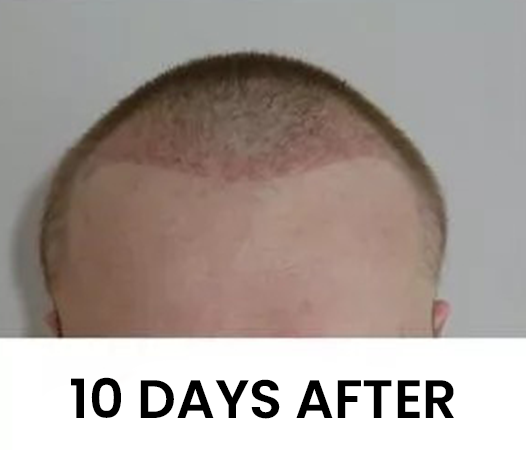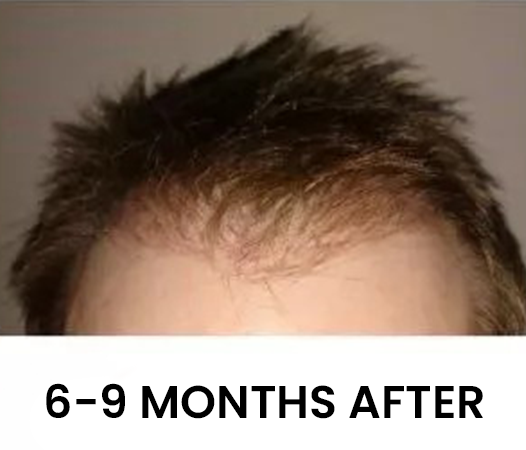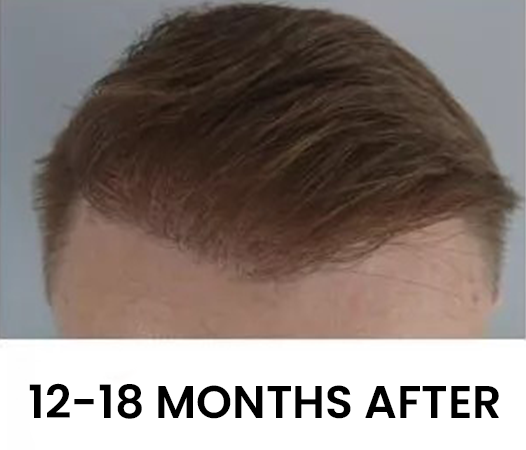
Hair Transplant Recovery Timeline: What To Expect For Me?
With the developing beauty industry, many beauty procedures have become popular. One of these popularized procedures is hair transplant operations. These hair transplant operations, which are highly preferred today, have a very easy and fast procedure. For this reason, it is preferred by many people.
Before this operation, which is preferred by many people, people may wonder about the change in hair follicles. At this point, they want to have detailed information. For this reason, we have prepared “Hair Transplant Recovery Timeline: What To Expert Me?”, you can have information about possible changes after hair transplantation. We wish you all healthy days.
How Long Does It Take For Hair To Regrow After Hair Transplant?
“Why does it take time for hair to grow back after hair transplant?” is undoubtedly one of the most curious questions in hair transplantation procedures. To give a clear answer to this question, we can say that it varies from person to person. Because the growth rate of the hair follicles depends entirely on the person’s body, the care he/she takes after transplant and the warnings he/she pays attention to. For this reason, it would be wrong to specify a definite period of time. However, if the person performs his/her care correctly and regularly, and at the same time takes into account the warnings and recommendations of his/her doctor, hair growth will take even less time than expected.
What are the Stages of Hair Growth After Hair Transplant Surgery?

After hair transplant surgery, the hair has certain growth phases. Along with these phases, different changes occur in the hair. These hair phases are divided into 4. These are; Anagen phase, Catagen phase, Telogen phase and Exogen phase.
- Anagen Phase
The Anagen phase, also known as the first phase after hair transplant, is the phase with the longest duration among hair growth phases. In this phase, hair follicles begin to grow and lengthen slowly. In addition, the thickness of the hair gradually becomes apparent. Thus, the first results from hair transplantation are obtained. - Catagen Phase
The growth phase after the anagen phase is called the catagen phase. This phase is also known as phase 2. In this growth phase, pauses in the transplanted follicles and shrinkage of the hair follicles can be observed. Because in this phase, hair follicles devote themselves to resting. - Telogen Phase
It is a phase of hair growth that follows the catagen phase. In this process, as in the catagen phase, the hair follicles are still resting. Therefore, small shock spills may occur in resting hair follicles. There is no need to worry about this. Because the hair follicles are preparing for strong hair follicles. - The exogenous phase, which is the last phase in hair transplantation, is a process that covers two to five months. This process is a time interval following the telogen phase and is the phase where the first healthy results are obtained. In the exogenous phase, shock hair loss stops and is replaced by new healthy and strong hair follicles. Thus, with the exogenous phase, the hair growth phases are completed.
Month by Month Hair Transplant Results
After hair transplant, changes can be observed month by month depending on the healing process. These observed changes vary from person to person. Therefore, you can have an idea about the process by examining the hair change results according to the months below.
1 Week After Hair Transplant: First Process After the Hair Transplant Procedure

The 1 week period after the procedure, which is the most important time period in hair transplant, is a process that should be taken very carefully. During this period, bleeding stops in the donor and recipient areas and the area begins to heal. However, the sensitivity that occurs after the procedure will also disappear. At the same time, there may be itching and crusting in the hair transplant area. This situation is quite normal. You can use light and harmless oils such as baby oil to reduce the crusts.
In addition, if your pain increases during this period, over-the-counter painkillers can be used in consultation with the hair transplant doctor. In addition, if you need to go out after the procedure, sun protective hats should be preferred. Finally, the hair should not be washed after the first care after the transplantation procedure. Because you may damage the hair follicles.
10 Days After Hair Transplant: First Recovery

After the hair transplant procedure, intensive crusting in the scalp continues 10 days after the operation, which largely determines the results, as in the 1-week period. But this time it is more than the crusting rate that occurs 1 week after transplant. These crusts are the size of a pinhead and pass on their own. You can use essential and harmless care oils in order to pass the scab process faster. In this way, the scabs will heal faster and the itching will stop.
In addition, some patients may develop small swellings in the graft transplant areas. These swellings go away on their own, just like scabs on the hair. Therefore, there is no need for an extra application. A period of 10 days is sufficient for all the complications we have mentioned. After 10 days, the first improvements are observed.
1 Month After Hair Transplant: Shock Hair Loss

One month after transplant, when slow healing begins, is a period when possible itching and scabbing symptoms disappear. During this period, small improvements are observed in the roots. However, the roots leave themselves to rest in order to heal completely. During this resting period, small shock spills may occur as the roots rest. Since these shock spills are temporary, you should not panic. After the shock shedding process, certain procedures can be applied to the hair follicles for the formation of better quality hair follicles.
For example, the hair follicles can be massaged slowly to increase blood flow and oxygen supply to the hair follicles or the hair follicles can be stimulated by using medications such as Minoxidil under the supervision of a doctor. This way, the hair follicles grow faster and healthier as more blood and oxygen flow to the hair follicles.
2 Months After Hair Transplant: Weak Hair Follicles

Two months after hair transplant, gradual improvements and improvements in the hair become more visible. In addition to these observed improvements, hair loss continues. However, these losses are not as much as in the 1st month. The main reason for the continuation of this loss is that the weak hair follicles are completely shed and replaced by stronger and better quality hair follicles. For this reason, it should not be forgotten that the hair that falls out is not the new strong hair that grows, but the old weak hair follicles.
Heavy exercise should be avoided during this period. Although improvements are observed, follicles can still be damaged. Therefore, heavy movements should be avoided. And since all results will be positive/negative during this period, stress should be avoided as much as possible in order not to trigger further hair loss.
3-4-5 Months After Hair Transplant: First Productive Results

During this period, the first results of the procedure can be obtained. This is because the hair follicles have healed and possible wounds have disappeared. In addition, the transplanted hair follicles have strengthened and the risk of dislocation of the hair follicles has been eliminated. For this reason, new strong hair has started to grow. However, these new strong hair follicles grow like feathers at first. Because the roots are trying to adapt to the growth of new hair. For this reason, there is no need to worry. Over time, these hairs will thicken by 1 cm every month and turn into hair strands.
In this process, plenty of water should be consumed to support hair growth. Because water consumption will help the hair to thicken and grow. In addition, sports movements can be started slowly, but you should not force yourself too much. Finally, care should be taken not to apply a chemical cosmetic product to the hair during this process.
6-9 Months After Hair Transplant: Visible Density

With this period, you will have entered the process that will completely satisfy you about hair transplantation operation. Because in this period, you will no longer have the “ugly duckling phase” appearance and you will have thick and lush hair. In the 6-9 month period, a noticeable growth spurt occurs in the hair. This attack will continue in this way for a few more months and complete its development. With this period, the growth and reproduction rate of the hair in general reaches 80%.
In the period 6-9 months after hair transplantation, you can now style the hair as you wish. By carefully combing the hair back with a comb, a razor or scissors can be used to shape uneven hair. You can also go to the hairdresser now. However, it still takes some time to get a blow-dry etc. at the hairdresser. You have to wait 1-1.5 years for this.
9-12 Months After Hair Transplant: Spectacular Appearance

In the 9-12 month period, the happy ending is approached. In this period, final results are obtained in hair transplantation operation. During this period, the hair starts to grow between 1 and 2 cm every month without interruption. In addition, a 100% improvement is observed in the donor and recipient area. The hair appearance will now look completely lush and natural. You will never be able to tell that you have undergone the procedure and thus it will not be distinguishable from your natural hair. Therefore, you should not have any reservations.
During this period, the hair can now be styled by giving the desired heat. In addition, you can shape the hair by using any hair styling product you want. At the same time, you can go to the hairdresser and have procedures such as coloring and blow-drying done with peace of mind. There will be no harm.
12-18 Months After Hair Transplant: Permanent Results

In this process, the hair grafts are now completely integrated and harmonized with the scalp. The hair has reached maximum maturity, thickened and the color of the transplanted follicles is in harmony with your natural hair color. This is the final stage of the hair transplantation process. Therefore, you can enjoy the results of hair transplantation by styling your new hair as you wish.
What are the Growth Rates of Grafts Month by Month in the Hair Growth Phase?
When we carefully examine the growth chart of hair grafts below, we can see that the first result was obtained in a 3-month period. When we look at the 5th month period, we can see that there is a 20% increase. Because in the 5th month, hair follicles begin to grow slowly and turn into mature hair strands. In the 9th month, a big leap in hair grafts is achieved and the peak level is reached. At this stage, the hair follicles thicken, grow and begin to grow rapidly.
As a result, we can say that major changes occur in hair follicles in the 5th and 9th months. In addition, the hair growth rate reaches 90% in the 12th month. This indicates that the increase in hair follicles is at high levels and that the follicles are recovering and at the same time everything is fine. In the 14th month, it can be concluded that hair growth and elongation is completed and new healthy hair is achieved.
If you want to spend your hair transplant in Turkey in a healthy way and at the same time experience a perfect healing process, you can contact Tas hospital’s specialist doctors and have fascinating and natural hair.
Frequently Asked Questions
Can I go out 7 days after a hair transplant?
You can go out one week after the hair transplantation, but do not forget to wear a hat. While it protects you from the harmful effects of the sun, it also protects the grafts. There is no harm in going out by taking these suggestions into consideration.
Can I touch my hair 7 days after hair transplant?
We recommend that you do not insert too much into the hair follicles. Because the hair follicles have just been processed, they may become infected or the grafts may dislodge. For this reason, you should not touch your hair.
Can I shower 2 weeks after hair transplant?
You can shower carefully 1 week after the hair transplant procedure. However, it is useful to use the care products prescribed by your doctor. Other products may damage the grafts.
Can I wear a hat 1 week after hair transplant?
You can wear a hat 1 week after the hair transplant operation. However, this hat should be comfortable and wide. Otherwise, it may damage the graft area.












